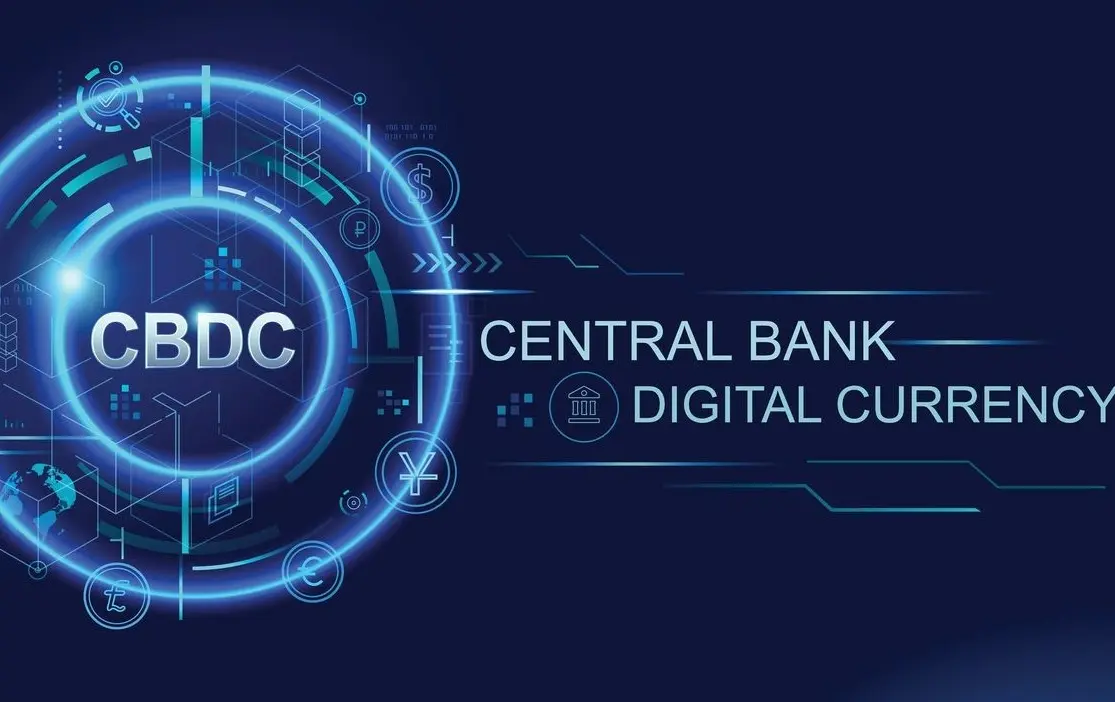The global rollout of CBDCs transforms financial transactions, offering faster payments, enhanced security, and financial inclusion while increasing privacy and adaptation challenges for everyday consumers.
- 1 What are CBDCs?
- 2 Global Rollout of CBDCs: Current Landscape
- 3 Benefits of CBDCs for Everyday Consumers
- 4 Challenges of CBDCs for Everyday Consumers
- 5 Practical Implications of CBDCs in Daily Life
- 6 The Role of Governments and Banks in The Global rollout of CBDCs
- 7 What Consumers Need to Prepare for with The Global Rollout of CBDCs
- 8 Conclusion
What are CBDCs?
Central Bank Digital currencies (CBDCs) are digital representations of a country’s fiat currency that are issued and controlled by the central bank. CBDCs, unlike cryptocurrencies, function on centralized networks with the trust and support of the issuing government.
Essentially, they represent a safe and efficient means to carry out digital transactions, combining the advantages of traditional money with modern technology.
Types of CBDCs
CBDCs come in two major types, each providing a different purpose:
- Retail CBDCs
- Wholesale CBDCs
Retail CBDCs
Designed for both individuals and businesses to execute daily transactions such as payments and savings.
Aim for greater financial inclusion, particularly in areas with limited access to banking services.
Wholesale CBDCs
Primarily used by financial institutions to facilitate interbank payments and cross-border transactions.
The focus is to speed up transaction time and reduce the cost of large-scale transactions between banks.
Key Features of CBDCs
Digital Nature: CBDCs are totally electronic and accessible through digital wallets, apps, or banking platforms.
Central Bank Backing: CBDCs, unlike crypto, are fully backed by a country’s central bank.
Financial Inclusion: CBDCs can help the unbanked population gain access to secure digital payment systems.
Programmability: CBDCs may incorporate programmable capabilities, allowing automated transactions for specific purposes (e.g., conditional payouts).
Quick Comparison: CBDCs vs. Cryptocurrencies
| Feature | CBDCs | Crypto |
| Issuer | Central bank (government-backed) | Decentralized entities or networks |
| Value Stability | Stable, tied to fiat currency | Volatile, market-driven |
| Regulation | Fully regulated | Typically unregulated or partially regulated |
| Anonymity | Limited anonymity, subject to monitoring | High anonymity, depending on the coin |
CBDCs offer the reliability of fiat currencies with the efficiency of digital systems, whereas crypto prioritizes decentralization and privacy.
Global Rollout of CBDCs: Current Landscape
CBDCs are gaining popularity globally, with several countries exploring or adopting these digital versions of fiat currency.
Adoption Status: Leading Countries
- China: China has been at the forefront with its digital yuan (e-CNY) development, conducting extensive trials in several locations. By 2024, e-CNY transactions will have reached around 7 trillion yuan ($987 billion), indicating substantial progress in adoption.
- The European Union (EU): The EU is actively developing the digital euro with the goal of enhancing the digital economy while maintaining monetary sovereignty. The digital euro is scheduled to be launched between 2026 and 2028.
- Nigeria: Nigeria introduced the eNaira, becoming one of the first African countries to launch a CBDC. Despite early challenges, the country continues to push its adoption to achieve financial inclusion.
- India: India has launched large-scale CBDC trials, demonstrating its commitment to adopting digital currency solutions.
Global Trends Driving CBDC Interest
- Shift Towards Cashless Societies: The decline in cash usage and the rise of digital payments have prompted central banks to consider CBDCs as a means of modernizing the monetary system.
- Technological Advancements: Blockchain and distributed ledger technologies have enabled the implementation of secure and efficient CBDCs.
- Geopolitical Considerations: Recent geopolitical developments have accelerated CBDC projects, as countries want to enhance their financial infrastructure and lessen reliance on traditional payment systems.
Predictions: CBDC Rollout by 2030
- Transaction Value Growth: CBDCs are projected to generate $213 billion in yearly payments by 2030, from just $100 million in 2023.
- Widespread Adoption: According to studies, by 2030, several central banks will have launched CBDCs, with a large number focused on retail CBDCs to ease consumer transactions.
- Enhanced Financial Inclusion: CBDCs are anticipated to play a vital role in delivering financial services to unbanked populations, particularly in emerging economies.
The worldwide landscape of CBDCs is quickly changing, with countries at various phases of exploration and implementation. As technological and societal trends continue to drive interest, CBDCs are poised to become critical components of the future financial ecosystem.
Benefits of CBDCs for Everyday Consumers
Financial Inclusion
One of the most important benefits of CBDCs is increasing financial inclusion. CBDCs allow millions of unbanked and underbanked individuals to access digital banking without the need for traditional bank accounts.
Consumers in rural or underserved regions can participate in the formal economy by using mobile technologies and digital wallets, opening up greater economic opportunities.
Reduced Costs
CBDCs help eliminate many of the inefficiencies and excessive expenses that come with traditional banking and payment systems.
- Lower Transaction Fee: By bypassing intermediaries such as commercial banks or payment processors, CBDCs minimize domestic and cross-border payment fees.
- Cheaper Remittances: CBDCs provide a cost-effective alternative to traditional remittance services, which sometimes demand high fees.
Faster Transactions
CBDCs enable near-instant payments, both locally and internationally.
- Real-Time Settlements: Unlike traditional banking systems, which rely on clearinghouses and often take days to complete transactions, CBDCs run on modern infrastructures, resulting in faster transaction times.
- Cross-Border Efficiency: CBDCs eliminate typical international payment delays, simplifying global trade and remittances.
Improved Security
CBDCs provide consumers with a secure and trustworthy digital payment system.
- Centralized Oversight: Central banks issue and control CBDCs, maintaining stability and mitigating the risks associated with private cryptocurrencies and shadow banking systems.
- Reduced Fraud: By integrating advanced encryption and fraud detection systems, CBDCs reduce the likelihood of counterfeiting or hacking.
CBDCs are set to transform the way everyday consumers interact with money by making digital payments more accessible, inexpensive, and secure. This innovation has the potential to bridge economic gaps and empower people all across the world.
Challenges of CBDCs for Everyday Consumers
- Privacy Concerns
One of the most difficult challenges of CBDCs is striking a balance between transparency and customer privacy.
Potential Surveillance: CBDCs are designed to be traceable, which raises concerns about government interference and financial surveillance. This amount of transparency could undermine anonymity, making consumers concerned about their financial data being tracked or misused.
Reduced Anonymity: Unlike cash, which allows for private, untraceable transactions, CBDCs are entirely digital and leave a trail, raising concerns about personal financial freedom.
- Cybersecurity risks
CBDCs, being digital systems, are naturally vulnerable to cyber threats.
Hacking Threats: Cybercriminals could target CBDC platforms, endangering individual accounts and the entire financial system.
Technical Failures: Infrastructure glitches or outages in CBDC systems could hinder access to money, reducing users’ capacity to make payments, particularly during emergencies.
- Adaptation Issues
The rollout of CBDCs may create challenges for populations unfamiliar with digital technologies.
Digital Literacy Barriers: Due to a lack of digital literacy, older populations and those living in remote regions may struggle to comprehend or utilize CBDC systems.
Infrastructure Gaps: Adoption of CBDCs may be difficult in regions with inadequate internet connectivity or smartphone access, excluding some customers.
- Monetary Policy Impacts
CBDCs could lead to monetary policy changes that directly impact consumers.
Negative Interest Rates: Central banks may implement negative interest rates on CBDC assets to stimulate spending during economic downturns, thus lowering customers’ savings value.
Bank Disintermediation: Broad adoption of CBDCs may lessen reliance on commercial banks, thereby undermining traditional financial systems and influencing available consumer services.
CBDCs present great opportunities, but their implementation poses distinct challenges. Addressing privacy concerns, increasing digital literacy, and ensuring strong cybersecurity are crucial to making CBDCs a consumer-friendly innovation.
Practical Implications of CBDCs in Daily Life
Payments & Shopping
CBDCs have the potential to transform the way customers make payments and shop, both online and offline.
- E-Commerce Innovation: CBDCs might make shopping online easier by minimizing intermediaries, lowering transaction costs, and allowing direct payments to merchants. Consumers enjoy faster, more secure, and cost-effective transactions.
- Point-of-Sale Transactions: With digital wallets supporting CBDCs, in-person transactions at retail outlets could become frictionless, with near-instant processing times, even in places with poor banking infrastructure.
Remittance
CBDCs provide a transformative solution to migrant workers and families that rely on cross-border payments.
- Cheaper Transfers: CBDCs eliminate the need for costly remittance services, considerably reducing fees associated with international money transfers.
- Faster Settlements: Unlike traditional remittance systems, which can take days to settle payments, CBDCs offer real-time cross-border transfers, ensuring that recipients receive the funds immediately.
Savings and Loans
CBDCs could create new opportunities in personal finance management.
- Microloans: Central banks and fintech companies could use CBDCs to establish microloan platforms that provide customers with affordable credit and faster approval processes.
- Digital Savings Tools: CBDCs integrated with smart contracts could enable new savings methods, such as automated deposits or reward programs, to encourage better financial habits.
The Impact on Cash Use
The growing adoption of CBDCs raises concerns about the future of physical cash.
- Reduced Cash Usage: CBDCs offer a digital alternative to cash, cutting dependency on physical currency for daily transactions. This tendency aligns with the transition to cashless societies in many developed economies.
- Will Cash Disappear?: While cash usage may decline, it is unlikely to disappear completely in the near future, especially in areas where cash remains a major part of the economy due to cultural preferences or poor digital infrastructure.
CBDCs aim to reshape everyday life by providing consumers with better convenience, affordability, and accessibility while managing their finances.
CBDCs’ practical benefits, which range from simplifying payments to increasing financial inclusion, have the potential to redefine modern financial systems.
The Role of Governments and Banks in The Global rollout of CBDCs
Central Banks: CBDC’s Backbone
Central banks are the driving force behind the global rollout of CBDCs and their management.
- Issuance and Regulation: Central banks are in charge of developing and issuing CBDCs while ensuring they are consistent with the country’s monetary policy. It includes regulating supply and monitoring transactions in order to avoid fraud and money laundering.
- Technology Infrastructure: Central banks invest in secure and scalable technology systems to power CBDCs, such as blockchain and distributed ledger technologies.
- Monetary Policy Integration: CBDCs provide central banks additional ability to control inflation and stabilize the economy through direct interventions.
Government: Policy Framework and Public Trust
Governments play an important role in fostering a favorable environment for the global rollout of CBDCs.
- Legal and Regulatory Frameworks: Governments establish regulations and policies to facilitate the global rollout of CBDCs, addressing issues such as data privacy, taxation, and anti-money laundering measures.
- Public Awareness Campaigns: Governments work to instill trust in citizens by educating them about CBDCs, their advantages, and their differences from crypto.
- Incentives for Adoption: Governments may provide incentives to encourage adoption, such as lower transaction costs, tax benefits for CBDC use, or subsidies for creating digital infrastructure.
Commercial Banks: Connecting Central Banks and Consumers
While central banks issue CBDCs, commercial banks serve as intermediaries in delivering these digital currencies to the public.
- Distribution Channels: Banks will give customers access to CBDCs through existing infrastructure such as digital wallets, mobile banking apps, and ATMs.
- Integration with Banking Services: Commercial banks integrate CBDCs into their financial products, offering CBDC-based savings accounts, loans, and investment opportunities.
- Ensuring Stability: Banks that participate in the global rollout of CBDCs help prevent disintermediation, ensuring that their role stays relevant in a dynamic financial environment.
Public-Private Collaborations: Driving Innovation
Governments, central banks, commercial banks, and private companies frequently collaborate to ensure the successful global rollout of CBDCs.
- Fintech Collaboration: Collaborating with fintech companies enables governments and banks to create innovative digital wallets, payment systems, and platforms that make CBDCs more accessible and user-friendly.
- Addressing Infrastructure Gaps: Collaborations extend CBDC access to underserved areas by using mobile networks and cloud-based solutions.
- Enhancing Security: The private sector’s cybersecurity knowledge ensures that systems are robust enough to protect against fraud and hacking.
Governments and banks play complementary responsibilities in the global rollout of CBDCs, ensuring system stability, accessibility, and trustworthiness.
CBDCs have the potential to transform the global financial environment by bringing together central bank oversight, government policy, and bank infrastructure with private sector innovation.
What Consumers Need to Prepare for with The Global Rollout of CBDCs
Digital Literacy
Understanding how to utilize CBDCs will be crucial for consumers as economies shift to digital currencies.
- Learning to Navigate Digital Wallets: Consumers should become acquainted with digital wallets, which will serve as the primary interface for storing and transacting with CBDCs.
- Importance of Financial Awareness: Consumers who understand the basics of CBDCs and how they work will be able to avoid fraud and make informed decisions.
- Bridging the Digital Divide: To encourage universal digital literacy, governments and private organizations may need to provide training programs, especially for older persons and underprivileged populations.
Security Practices
CBDCs operate in a digital environment; thus, consumers must adopt strong security measures to protect their assets.
- Protecting Digital Wallets: To protect digital wallets, use strong passwords, use two-factor authentication (2FA), and only download wallets from trustworthy sources.
- Avoiding Phishing Scams: Consumers should be cautious of fake links or emails that aim to steal sensitive information.
- Regular Updates: Keep wallets and devices updated with the latest security updates to protect against vulnerabilities.
Transition Period
The global rollout of CBDCs will most likely involve stages that will need support from governments and financial institutions.
- Government Assistance: Central banks may offer subsidies, educational programs, and incentives to encourage the adoption of CBDCs while ensuring citizens understand how to use them properly.
- Hybrid Systems: During the transition, physical currency and CBDCs are expected to coexist, allowing citizens to adjust gradually without being pushed to use digital-only transactions.
- Community Support: Banks and fintech companies might offer customer support services to assist consumers in navigating technical challenges, resulting in a more seamless transition.
Preparing for the global rollout of CBDCs requires a mix of education, awareness, and strong security measures. As governments roll out CBDCs, providing consumers with the necessary tools and knowledge will ensure their successful adoption and integration into everyday life.
Conclusion
The global rollout of CBDCs presents both opportunities and challenges for consumers worldwide.
As CBDCs become a reality, consumers must be informed and prepared to navigate the digital currency landscape successfully.
- Take proactive actions to increase your digital literacy.
- Use secure techniques to manage digital wallets and transactions.
- Stay up to date on how governments and central banks are implementing CBDCs and how they will impact your financial habits.



